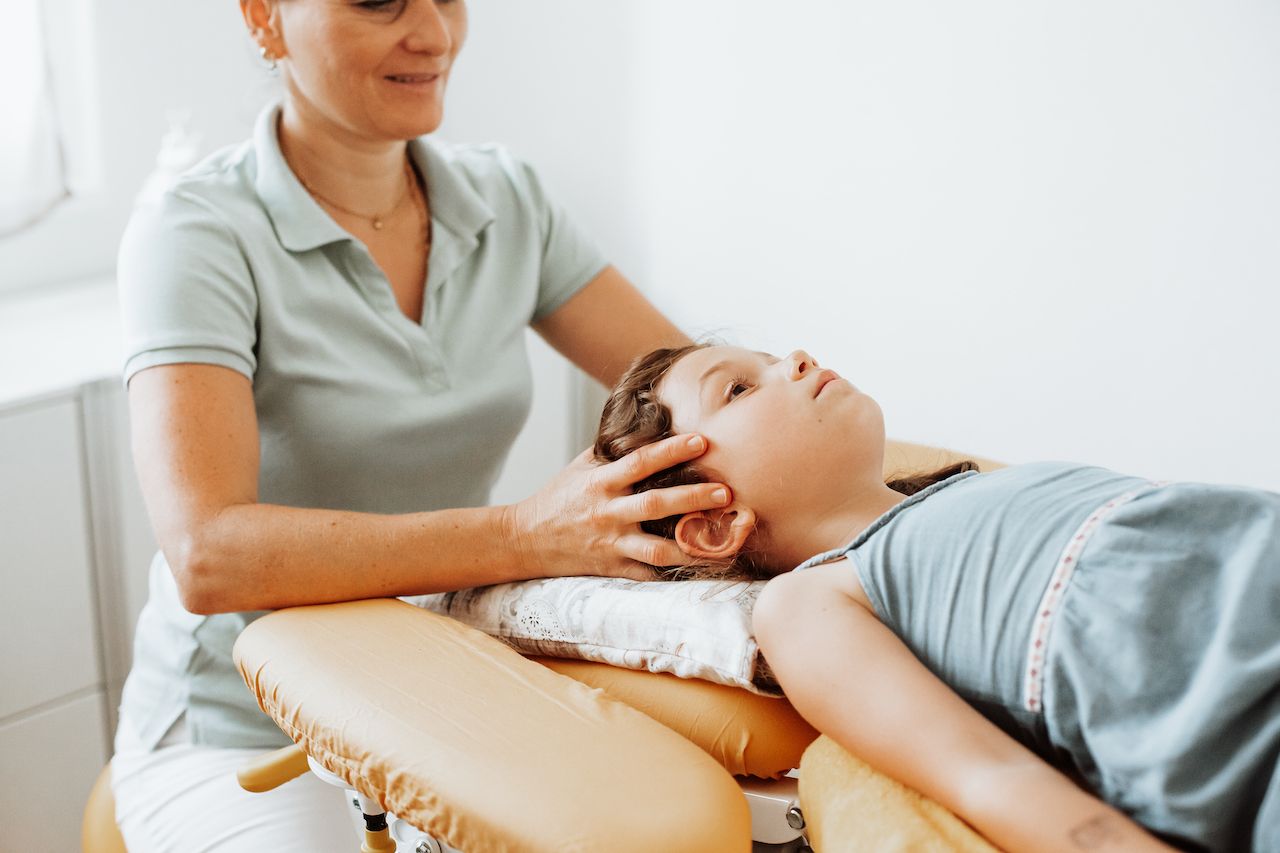
Craniosacral Therapy
What is Complementary Therapy?
Complementary therapy is a holistic method that helps you bring your body, mind, and soul into harmony. In my work, I use it in the form of craniosacral therapy. It complements conventional medicine and other therapeutic treatments in a meaningful way, promotes self-awareness, and strengthens both, your ability to recover and your inner healing powers—especially in times of stress, pain, exhaustion, or emotional strain. The focus is on your own resources and your active participation in the healing process.
During this process, which you actively help to shape over several sessions, you are encouraged to mindfully observe what your body is showing you. This allows you to experience connections – and change them step by step. The goal is to achieve an inner balance that strengthens you and gives you more confidence in your body's own healing powers.
Craniosacral Therapy
Rates
| Time | Costs | Remarks |
|---|---|---|
60 min | CHF 150.00 | including preparation and wrap-up |
90 min | CHF 250.00 | including preparation and wrap-up |
A treatment usually takes 60 to 90 minutes and includes the study of the anemnesis questionnaire, examination and wrap-up.
The amount is payable in cash. You will be handed out a print out receipt for your health insurance or I send it to you as a pdf per email if you wish so.
Should you be hindered to attent your appointment, please, cancel it at least 48h in advance. Otherwise the session will be fully charched.
Please see the Terms of Service.
Craniosacral Therapy
Origin of Craniosacral Therapy
The approach of craniosacral therapy was mainly founded by William Garner Sutherland (1873 – 1954), one of A. T. Stills students. He grew up in the middle west of USA as a son of a blacksmith. He said once, a D.O. «Doctor of Osteopathy» actually stands for «Dig On» to find a blockage / disturbance in the body.
As a young man he heard about osteopathy and started his study on the College of Osteopathy in Kirksville, Missouri which was worldwide unique at that time. There, A. T. Still, the founding father of osteopathy was teaching, too. 1989 Sutherland found a broken skull on the floor of the college and noticed that the pieces showed even patterns and clear fracture sites. He was taught that from a certain age on, the skull pieces are stiffly connected, without any movement in between. But the aspect of those clear, some of them even beveled fracture sights, remembered him on gills of a fish allowing for breathing.
The idea, that joint-like movements among the bone fragments could be possible, didn't let him go anymore. But still he wanted to trust in his natural scientific education and to disprove that there is movement between the skull bones.
He handcrafted a helmet and experimented on his own head by fixing set screws more or less tightly, what created symptoms like headaches, nausea, digestive issues and much more.... He also felt a big relief as soon as the set screws were loosened. After few months of research, he was convinced, that skull bones of adults really are mobile and he started to seek after the force and the source of that movement. He found that all cells in the body followed an involuntary, automatic rhythm which is crucial for the maintenance of health and which makes the difference between living and death tissue.
A lot of Sutherland's research findings was the result of a combination of profound anatomical knowledge and his delicate sense of touch and cognitive ability. He found that those breathing movements are touchable with sensitive hands and that they deliver a lot of clinical information.
(References: Ulrich Löwe; Michael Kern)



